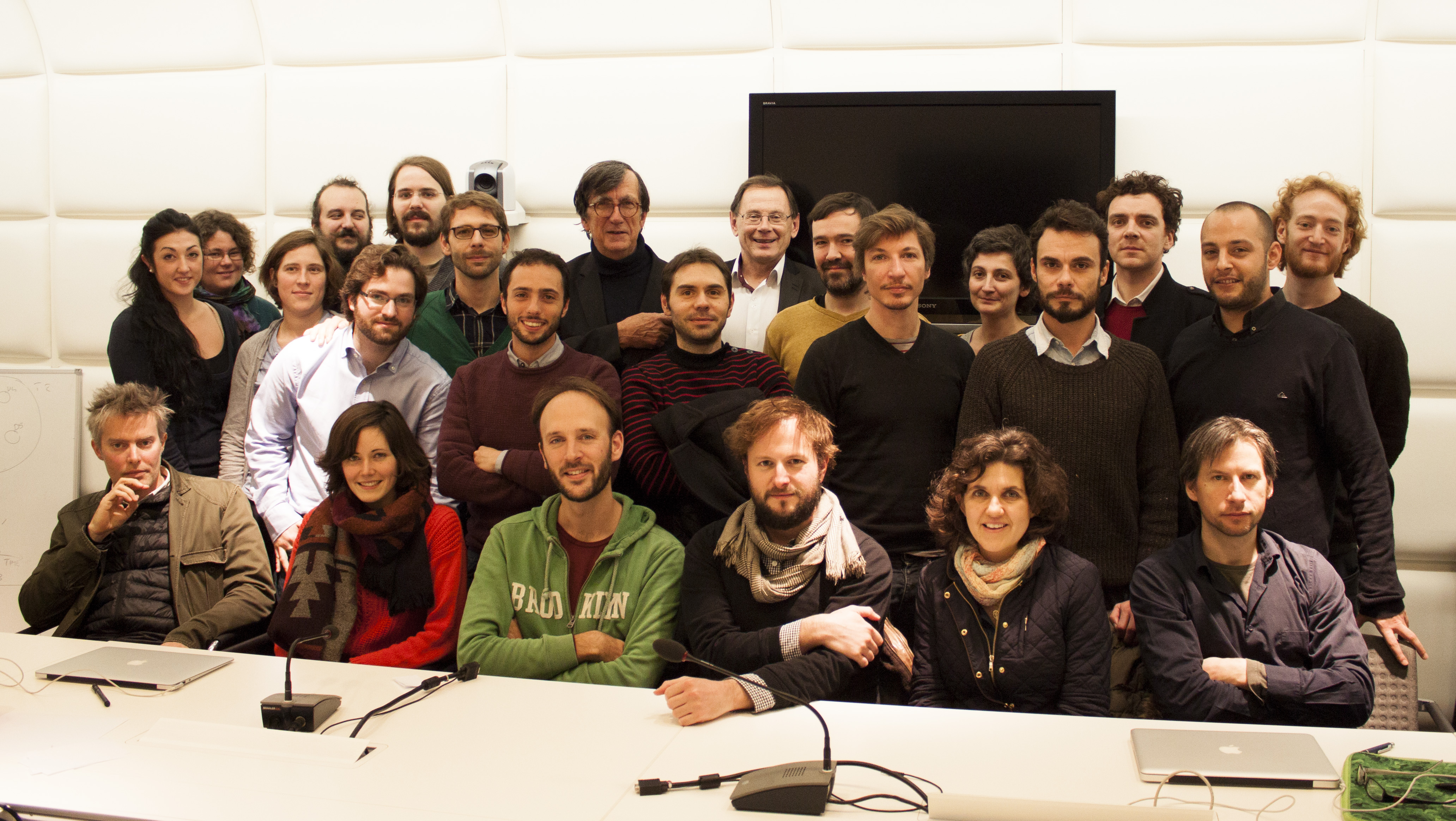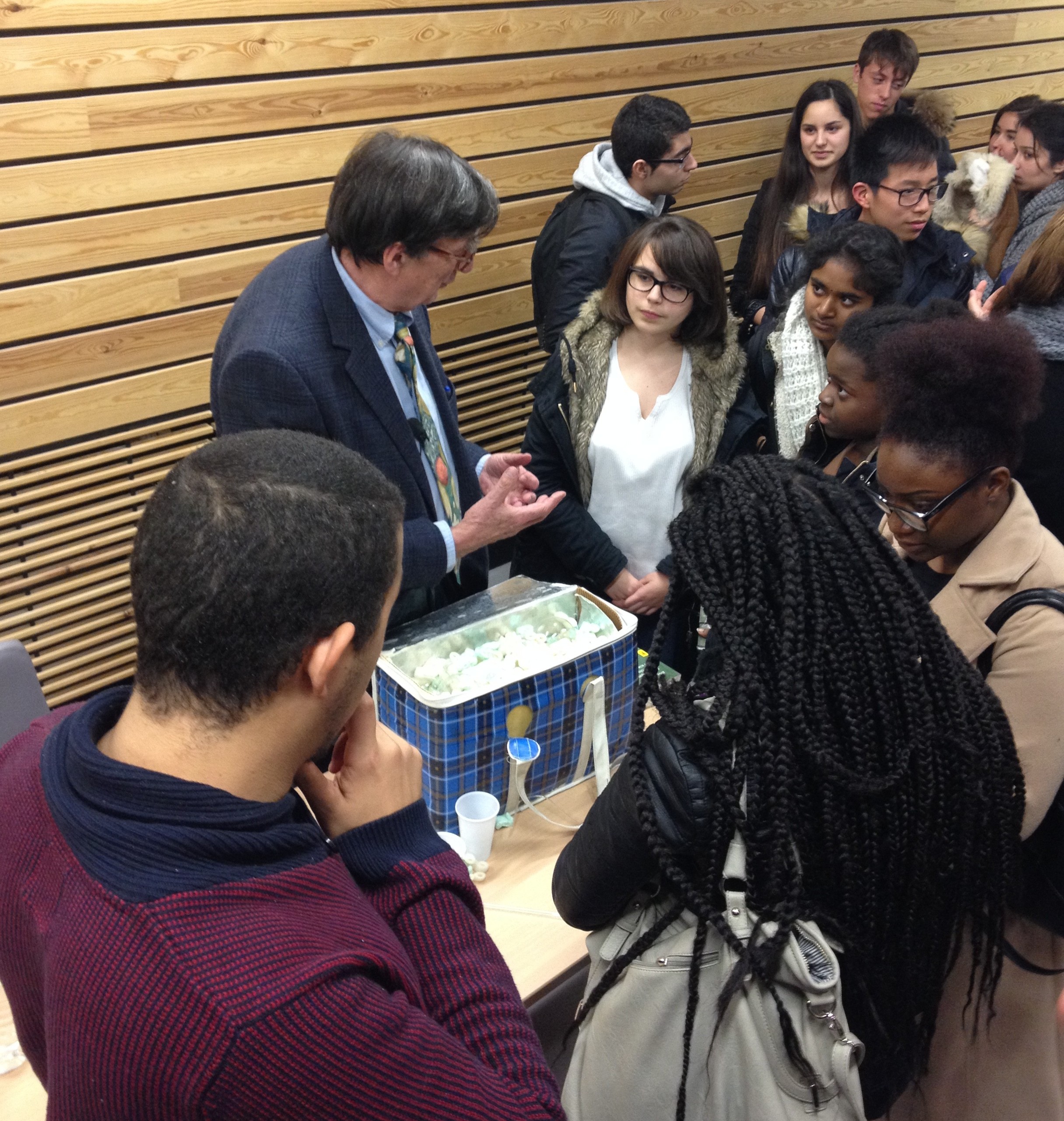░░░░░░░░░░░░░░░░░░░░░░░░░░░░░░░░░░░░░░░░░░░░░░░░░░░░░▒▒▓▓▓▓▓▓▓▓▓▓▓▓▓▓▓▓▓▓▓▓▓▓▓▓▓▓▓▓▓▒▒▒▒▒▒░ ░▒░ ░ ░░░░▒▒▒▒▒▒▒▒▒▒▒▒░░▒▒▒▒▒▒▒▒▒▒░░░░░░░░░░░░░░░░░░░░░░░░░░░░░░░░░░░░░░░░░░░░░░░░░░░░░░░░░░░░░░░░░░░░░░░░░░░░░░░░░░░░░░░░░░░░░░░░░░░░░░
░░░░░░░░░░░░░░░░░░░░░░░░░░░░░░░░░░░░░░░░░░░░░░░░░░░░░▒▒▓▓▓▓▓▓▓▓▓▓▓▓▓▓▓▓▓▓▓▓▓▓▒▓▓▓▓▓▒▒▒▒▒▒░░ ░▒░ ░ ░░░▒░▒▒▒▓▒▒▒▒▒▒░▒░░▒▒▒▒▒▒░░░░░░░░░░░░░░░░░░░░░░░░░░░░░░░░░░░░░░░░░░░░░░░░░░░░░░░░░░░░░░░░░░░░░░░░░░░░░░░░░░░░░░░░░░░░░░░░░░░░░░░░░
░░░░░░░░░░░░░░░░░░░░░░░░░░░░░░░░░░░░░░░░░░░░░░░░░░░░▒▒▒▓▓▓▓▓▓▓▓▓▓▓▓▓▓▓▓▓▓▓▓▓▓▒▓▓▓▓▓▒▒▒▒▒▒░ ░░░░ ░░▒░▒▒▒▒▒▒▒▒▒▒░░░░░▒▒▒▒▒▒▒░░▒░░░░░░░░░░░░░░░░░░░░░░░░░░░░░░░░░░░░░░░░░░░░░░░░░░░░░░░░░░░░░░░░░░░░░░░░░░░░░░░░░░░░░░░░░░░░░░░░░░░░░
░░░░░░░░░░░░░░░░░░░░░░░░░░░░░░░░░░░░░░░░░░░░░░░░░░░░▒▒▒▓▓▓▓▓▓▓▓▓▓▓▓▓▓▓▓▓▓▓▒▓▒▒▒▒▓▓▓▒▒▒▒▒▒░ ░░▒░ ░░▒▒░▒▒▒▒▒▒░▒▒▒░░░░░░▒▒▒▒▒▒░░░░░░░░░░░░░░░░░░░░░░░░░░░░░░░░░░░░░░░░░░░░░░░░░░░░░░░░░░░░░░░░░░░░░░░░░░░░░░░░░░░░░░░░░░░░░░░░░░░░░░░░
░░░░░░░░░░░░░░░░░░░░░░░░░░░░░░░░░░░░░░░░░░░░░░░░░░░▒▓░▒▒▓▓▓▓▓▓▓▓▓▓▓▓▓▓▓▓▓▒▒▒▒▒▒▒▒▒▒▒▒▒▒▒▒░ ░░░ ░▒▒▒▒░▒▒▒░░░▒▒░░░░░░░▒▒▒▒▒▒░░░░░░░░░░░░░░░░░░░░░░░░░░░░░░░░░░░░░░░░░░░░░░░░░░░░░░░░░░░░░░░░░░░░░░░░░░░░░░░░░░░░░░░░░░░░░░░░░░░░░░░░
░░░░░░░░░░░░░░░░░░░░░░░░░░░░░░░░░░░░░░░░░░░░░░░░░░░▒▒░▒▒▓▓▓▓▓▓▓▓▓▓▓▓▓▓▓▓▓▒▒▒▒▒▒▒▒▒▒▒▒▒▒▒▒░ ░░░ ░▒▒▒░▒░▒▒░░▒▒░░░░░░░░░▒▒▒▒▒▒░░░░░░░░░░░░░░░░░░░░░░░░░░░░░░░░░░░░░░░░░░░░░░░░░░░░░░░░░░░░░░░░░░░░░░░░░░░░░░░░░░░░░░░░░░░░░░░░░░░░░░░░
░░░░░░░░░░░░░░░░░░░░░░░░░░░░░░░░░░░░░░░░░░░░░░░░░░░▓▒░░▒▓▓▓▓▓▓▓▓▓▓▓▓▓▓▓▓▓▒▒▒▒▒▒▒▒▒▒▒▒▒▒▒▒░░░░ ░▒▒░░░▒░▒░░░░░░░░░░░░░▒▒▒▒▒▒░░░░░░░░░░░░░░░░░░░░░░░░░░░░░░░░░░░░░░░░░░░░░░░░░░░░░░░░░░░░░░░░░░░░░░░░░░░░░░░░░░░░░░░░░░░░░░░░░░░░░░░░
░░░░░░░░░░░░░░░░░░░░░░░░░░░░░░░░░░░░░░░░░░░░░░░░░░▒▓▒░░▒▓▓▓▓▓▓▓▓▓▓▓▓▓▓▓▒▒▒▒▒▒▒▒▒▒▒▒▒▒▒▒▒▒░ ░░▒▒░░░▒▒░░░░░░░░░░░░░░▒▒░▒▒▒░░░▒░░░░░░░░░░░░░░░░░░░░░░░░░░░░░░░░░░░░░░░░░░░░░░░░░░░░░░░░░░░░░░░░░░░░░░░░░░░░░░░░░░░░░░░░░░░░░░░░░░░░
░░░░░░░░░░░░░░░░░░░░░░░░░░░░░░░░░░░░░░░░░░░░░░░░░▒▓▒▒▒▒▒▓▓▓▓▓▓▓▓▓▓▓▓▓▓▓▓▒▒▒▒▒▒▒▒▒▒▓▒▒▒▒░░ ░▒▒░░░▒░▒░░░░░▒░░░░░░░░░░░▒▒▒░░░▒░░░░░░░░░░░░░░░░░░░░░░░░░░░░░░░░░░░░░░░░░░░░░░░░░░░░░░░░░░░░░░░░░░░░░░░░░░░░░░░░░░░░░░░░░░░░░░░░░░░░
░░░░░░░░░░░░░░░░░░░░░░░░░░░░░░░░░░░░░░░░░░░░░░░░░▒▓▒▒▒▒▓▓▓▓▓▓▓▓▓▓▓▓▓▓▓▓▓▒▒▒▒▒▒▒▒▒▒▓▒░▒▒░░░░ ░░▒░░░░▒░▒░░░░░▒░░░░░░░░░░░▒▒▒░░░░░░░░░░░░░░░░░░░░░░░░░░░░░░░░░░░░░░░░░░░░░░░░░░░░░░░░░░░░░░░░░░░░░░░░░░░░░░░░░░░░░░░░░░░░░░░░░░░░░░░░
░░░░░░░░░░░░░░░░░░░░░░░░░░░░░░░░░░░░░░░░░░░░░░░░░▒▓▓▓▓▓▓▓▓▓▓▓▓▓▓▓▓▓▓▓▓▓▓▒▒▒▒▓▒▒▓▒▒▓▒░▒░░░░░ ░░░░░░▒░░▒░░░░░░░░ ░░░░░░░░░▒▒░░░░░░░░░░░░░░░░░░░░░░░░░░░░░░░░░░░░░░░░░░░░░░░░░░░░░░░░░░░░░░░░░░░░░░░░░░░░░░░░░░░░░░░░░░░░░░░░░░░░░░░░
░░░░░░░░░░░░░░░░░░░░░░░░░░░░░░░░░░░░░░░░░░░░░░░░░▒▓▓▓▓▓▓▓▓▓▓▓▓▓▓▓▓▓▓▓▓▓▒▒▓▓▓▓▓▓▓▒▒▓▒▒▒░░░ ░ ░░░░ ░░░░░░░ ░░░ ░░░░░░░░░▒▒ ░░░░░░░░░░░░░░░░░░░░░░░░░░░░░░░░░░░░░░░░░░░░░░░░░░░░░░░░░░░░░░░░░░░░░░░░░░░░░░░░░░░░░░░░░░░░░░░░░░░░░░░
░░░░░░░░░░░░░░░░░░░░░░░░░░░░░░░░░░░░░░░░░░░░░░░░▒▓▓▓▓▓▓▓▓▓▓▓▓▓▓▓▓▓▓▓▓▓▓▒▓▓▓▓▓▓▓▓▒▒▒▒▒░░░ ░ ░ ░░░░░░░░░░░░░ ░░ ░░░░░ ░░░▒░ ░ ░░░░░░░░░░░░░░░░░░░░░░░░░░░░░░░░░░░░░░░░░░░░░░░░░░░░░░░░░░░░░░░░░░░░░░░░░░░░░░░░░░░░░░░░░░░░░░░░░
░░░░░░░░░░░░░░░░░░░░░░░░░░░░░░░░░░░░░░░░░░░░░░░░▒▓▓▓▓▓▓▓▓▓▓▓▓▓▓▓▓▓▓▓▓▓▓▒▓▓▓▓▓▓▓▓▒▒▒▒░░░░ ░░ ░▒░░░░░░░░░░░░ ░░ ░░░ ░░░░ ░░░ ░ ░░░░░░░░░░░░░░░░░░░░░░░░░░░░░░░░░░░░░░░░░░░░░░░░░░░░░░░░░░░░░░░░░░░░░░░░░░░░░░░░░░░░░░░░░░░░░░░
░░░░░░░░░░░░░░░░░░░░░░░░░░░░░░░░░░░░░░░░░░░░░░░░▒▓▓▓▓▓▓▓▓▓▓▓▓▓▓▓▓▓▓▓▓▓▓▓▓▓▓▓▓▓▓▒▒▒▒░░░░░░░░░ ░▒░░░░░░░░░ ░░ ░ ░░ ░░ ░░ ░░░░░░░░░░░░░░░░░░░░░░░░░░░░░░░░░░░░░░░░░░░░░░░░░░░░░░░░░░░░░░░░░░░░░░░░░░░░░░░░░░░░░░░░░░░░░░░░░░
░░░░░░░░░░░░░░░░░░░░░░░░░░░░░░░░░░░░░░░░░░░░░░░▒▓▓▓▓▓▓▓▓▓▓▓▓▓▓▓▓▓▓▓▓▓▓▓▓▓▓▓▓▓▓▓▒▒▒▒░░░░░░░░ ░▒░░░░░ ░░ ░ ░ ░░ ░░ ░░░░░░░░░░░░░░░░░░░░░░░░░░░░░░░░░░░░░░░░░░░░░░░░░░░░░░░░░░░░░░░░░░░░░░░░░░░░░░░░░░░░░░░░░░░░░░░░
░░░░░░░░░░░░░░░░░░░░░░░░░░░░░░░░░░░░░░░░░░░░░░▒▒▓▓▓▓▓▓▓▓▓▓▓▓▓▓▓▓▓▓▓▓▓▓▓▓▓▓▓▓▓▓▓▒▒▒░░░░░░░ ░░░░ ░▒░░░ ░ ░ ░░ ░░░░░░░░░░░░░░░░░░░░░░░░░░░░░░░░░░░░░░░░░░░░░░░░░░░░░░░░░░░░░░░░░░░░░░░░░░░░░░░░░░░░░░░░░░░░░░░░░
░░░░░░░░░░░░░░░░░░░░░░░░░░░░░░░░░░░░░░░░░░░░░░▒▒▒▓▓▓▓▓▓▓▓▓▓▓▓▓▓▓▓▓▓▓▓▓▓▓▓▓▓▓▓▓▓▓▒░░░░░░░░ ░ ░░ ░ ░▒░░░ ░░░░░░░░░░░░░░░░░░░░░░░░░░░░░░░░░░░░░░░░░░░░░░░░░░░░░░░░░░░░░░░░░░░░░░░░░░░░░░░░░░░░░░░░░░░░░░░░░░░░░░░
░░░░░░░░░░░░░░░░░░░░░░░░░░░░░░░░░░░░░░░░░░░░░░▒▒▒▓▓▓▓▓▓▓▓▓▓▓▓▓▓▓▓▓▓▓▓▓▓▓▓▓▓▓▓▓▓▓▒░░░░░░░░░ ░ ░▒░░░░ ░ ░░ ░░ ░ ░░░░░░░░░░░░░░░░░░░░░░░░░░░░░░░░░░░░░░░░░░░░░░░░░░░░░░░░░░░░░░░░░░░░░░░░░░░░░░░░░░░░░░░░░░░░░░░░░░░░░░░░░
░░░░░░░░░░░░░░░░░░░░░░░░░░░░░░░░░░░░░░░░░░░░░░▓▓▓▓▓▓▓▓▓▓▓▓▓▓▓▓▓▓▓▓▓▓▓▓▓▓▓▓▓▓▓▓▓▒▒░░░░░░░░ ░░░ ░▒░░░░ ░░ ░░░░ ░░░░░ ░░░░░░░▒▒▒░░░░░░░░░░░░░░░░░░░░░░░░░░░░░░░░░░░░░░░░░░░░░░░░░░░░░░░░░░░░░░░░░░░░░░░░░░░░░░░░░░░░░░░░░░░░░░░░
░░░░░░░░░░░░░░░░░░░░░░░░░░░░░░░░░░░░░░░░░░░░░░▓▓▓▓▓▓▓▓▓▓▓▓▓▓▓▓▓▓▓▓▓▓▓▓▓▓▓▓▓▓▓▓▓▒▒░░░░░░░░░░ ░░ ░░░ ░░ ░░░░░░ ░░░░░░ ░░░░░░▒▓▒▒░░░░░░░░░░░░░░░░░░░░░░░░░░░░░░░░░░░░░░░░░░░░░░░░░░░░░░░░░░░░░░░░░░░░░░░░░░░░░░░░░░░░░░░░░░░░░░░░
░░░░░░░░░░░░░░░░░░░░░░░░░░░░░░░░░░░░░░░░░░░░░░▒▓▓▓▓▓▓▓▓▓▓▓▓▓▓▓▓▓▓▓▓▓▒▓▒▒▒▓▓▓▓▓▓▒▒░░░░░░░░░░ ░░ ░░ ░ ░░ ░ ░░░░░░░░▒░░░░ ░▒▒▒▒▓▓▓▓▒░░░░░░░░░░░░░░░░░░░░░░░░░░░░░░░░░░░░░░░░░░░░░░░░░░░░░░░░░░░░░░░░░░░░░░░░░░░░░░░░░░░░░░░░░░░░░░░░░
░░░░░░░░░░░░░░░░░░░░░░░░░░░░░░░░░░░░░░░░░░░░░▒▓▓▓▓▓▓▓▓▓▓▓▓▓▓▓▓▓▓▓▓▓▓▓▓▒▒▓▓▓▓▓▓▒░░░░░░░░░ ░░░░░░ ░░ ░ ░░░░░ ░░░▒▒░░░░░░░░░ ░▒▒▓▓▓▓▓▓▒░░░░░░░░░░░░░░░░░░░░░░░░░░░░░░░░░░░░░░░░░░░░░░░░░░░░░░░░░░░░░░░░░░░░░░░░░░░░░░░░░░░░░░░░░░░░░░░░░
░░░░░░░░░░░░░░░░░░░░░░░░░░░░░░░░░░░░░░░░░░░░▒▓▓▓▓▓▓▓▓▓▓▓▓▓▓▓▓▓▓▓▓▓▒▒▓▒▒▒▓▓▓▓▓▓▒▒░░░░░░░ ░░░░░░░░░ ░░░░░ ░░░░░░░░▒▒▒░░░░ ░▒▒▓▓▓▓▓▓▒░░░░░░░░░░░░░░░░░░░░░░░░░░░░░░░░░░░░░░░░░░░░░░░░░░░░░░░░░░░░░░░░░░░░░░░░░░░░░░░░░░░░░░░░░░░░░░░░░
░░░░░░░░░░░░░░░░░░░░░░░░░░░░░░░░░░░░░░░░░░░░░▒▓▓▓▓▓▓▓▓▓▓▓▓▓▓▓▓▓▓▓▓▓▒▒▒▒▒▒▓▓▓▓▓▒▒░░░░░░░ ░░░░░░░░░░░ ░ ░░░░░ ░░░▒░░░▒▒▒░░░░░ ░▒▒▓▓▓▓▓▒▒░░░░░░░░░░░░░░░░░░░░░░░░░░░░░░░░░░░░░░░░░░░░░░░░░░░░░░░░░░░░░░░░░░░░░░░░░░░░░░░░░░░░░░░░░░░░░░░░░
░░░░░░░░░░░░░░░░░░░░░░░░░░░░░░░░░░░░░░░░░░░░░▒▓▓▓▓▓▓▓▓▓▓▓▓▓▓▓▓▓▓▓▓▓▒▒▒▒▒▒▓▓▓▓▓▒░░░░░░░░░░░░ ░░░░░░░░ ░░░░░ ░▒▒▒░▒▒▒▒▒░░ ░░▒▒▒▓▓▒▒▒▒░░░░░░░░░░░░░░░░░░░░░░░░░░░░░░░░░░░░░░░░░░░░░░░░░░░░░░░░░░░░░░░░░░░░░░░░░░░░░░░░░░░░░░░░░░░░░░░░░
░░░░░░░░░░░░░░░░░░░░░░░░░░░░░░░░░░░░░░░░░░░░░▒▓▓▓▓▓▓▓▓▓▓▓▓▓▓▓▓▓▓▓▒▓▒▒▒▒▒▒▓▓▓▓▓▒░░░░░░░░░░░░░░░ ░░░░░ ░░░░░░ ░▓▓▒▒▒▒▒▒▒▒▒░ ░▒▒▒▒▒▒▒▒░░░░░░░░░░░░░░░░░░░░░░░░░░░░░░░░░░░░░░░░░░░░░░░░░░░░░░░░░░░░░░░░░░░░░░░░░░░░░░░░░░░░░░░░░░░░░░░░░
░░░░░░░░░░░░░░░░░░░░░░░░░░░░░░░░░░░░░░░░░░░░░▒▒▒▓▓▓▒▒▒▓▓▓▓▓▓▓▓▓▓▓▒▒▒▒▒▒▒▒▓▓▓▓▒▒░░░▒░░░░░ ░░░ ░░░░ ░ ░░░░▒░░░▓▓▒▒▒▒▒▒▒▒░░░░ ░░░░░░░░░░░░░░░░░░░░░░░░░░░░░░░░░░░░░░░░░░░░░░░░░░░░░░░░░░░░░░░░░░░░░░░░░░░░░░░░░░░░░░░░░░░░░░░░░░░░░░░░░░
░░░░░░░░░░░░░░░░░░░░░░░░░░░░░░░░░░░░░░░░░░░░░░▒▒▓▓▓▒▒▒▓▓▓▓▓▓▓▓▓▓▓▒▒▒▒▒▒▒▒▓▓▓▓▒░░░░▒░░░░ ░░░░░░░░░░░░░░░░░░▒░░▒▓▓▒▒▒▒▒▒▒░░░░░ ░░░░░░░░░░░░░░░░░░░░░░░░░░░░░░░░░░░░░░░░░░░░░░░░░░░░░░░░░░░░░░░░░░░░░░░░░░░░░░░░░░░░░░░░░░░░░░░░░░░░░░░░░
░░░░░░░░░░░░░░░░░░░░░░░░░░░░░░░░░░░░░░░░░░░░░░▒▒▒▓▓▒▒▒▓▓▓▓▓▓▓▓▓▓▓▓▒▒▒▒▒▒▓▓▓▓▓▒░░░░▒░░░ ░░░░░░ ░░░░░░░░▒▒▒▒▒▓▓▓▓▒▒▒░░░░░░░░░ ░░░░░░░░░░░░░░░░░░░░░░░░░░░░░░░░░░░░░░░░░░░░░░░░░░░░░░░░░░░░░░░░░░░░░░░░░░░░░░░░░░░░░░░░░░░░░░░░░░░░░░░░
░░░░░░░░░░░░░░░░░░░░░░░░░░░░░░░░░░░░░░░░░░░░░░▒▒▒▓▓▒▒▓▓▓▓▓▓▓▓▓▓▓▒▓▒▒▒▒▒▓▓▓▓▓▓▒░░░░▒░░ ░░░░░░░░░░░░░░▒▒▒░▒▓▓▒▒▒▒░░░░░░ ░░ ░░░░░░░░░░░░░░░░░░░░░░░░░░░░░░░░░░░░░░░░░░░░░░░░░░░░░░░░░░░░░░░░░░░░░░░░░░░░░░░░░░░░░░░░░░░░░░░░░░░░░░░
░░░░░░░░░░░░░░░░░░░░░░░░░░░░░░░░░░░░░░░░░░░░░░▒▒▒▒▓▒▓▓▓▓▓▓▓▓▓▓▓▓▒▒▒▒▒▒▒▒▓▓▓▓▓▒░░░▒░░░ ░░░░░░░░░░░░░░▒▒░░░░░░░░░░░░ ░░ ░░ ░░░░░░░░░░░░░░░░░░░░░░░░░░░░░░░░░░░░░░░░░░░░░░░░░░░░░░░░░░░░░░░░░░░░░░░░░░░░░░░░░░░░░░░░░░░░░░░░░░░░░░░
░░░░░░░░░░░░░░░░░░░░░░░░░░░░░░░░░░░░░░░░░░░░░░▒▒▒▒▒▓▓▓▓▓▓▓▓▓▓▓▓▓▒▒▒▓▓▒▒▒▓▓▓▓▓▒░░░░░░ ░░░░░░░░░░░░░░░░░░░ ░░░ ░░░░░░░░ ░░░░░░░░░░░░░░░░░░░░░░░░░░░░░░░░░░░░░░░░░░░░░░░░░░░░░░░░░░░░░░░░░░░░░░░░░░░░░░░░░░░░░░░░░░░░░░░░░░░░░░░
░░░░░░░░░░░░░░░░░░░░░░░░░░░░░░░░░░░░░░░░░░░░░░░▒▒▓▓▓▓▓▓▓▓▓▓▓▓▓▓▓▒▒▒▓▓▒▒▒▓▓▓▓▒▒░░░░░ ░░░░░░░░░░░░░░░░░░ ░░░░░░ ░ ░░░░░░░░░░░░░░░░░░░░░░░░░░░░░░░░░░░░░░░░░░░░░░░░░░░░░░░░░░░░░░░░░░░░░░░░░░░░░░░░░░░░░░░░░░░░░░░░░░░░░░
░░░░░░░░░░░░░░░░░░░░░░░░░░░░░░░░░░░░░░░░░░░░░░▒▒▓▒▒▓▓▓▓▓▓▒▓▓▓▓▓▓▓▒▒▓▓▒▒▓▓▓▓▓▒░░░░░░ ░ ░░░░░░░░░░░░░░ ░░░░░░░ ░ ░░ ░░░ ░░░░░░░░░░░░░░░░░░░░░░░░░░░░░░░░░░░░░░░░░░░░░░░░░░░░░░░░░░░░░░░░░░░░░░░░░░░░░░░░░░░░░░░░░░░░░░░░░░
░░░░░░░░░░░░░░░░░░░░░░░░░░░░░░░░░░░░░░░░░░░░░░▒▒▒▒▒▓▓▓▓▓▒▒▓▓▓▓▓▒▒▒▒▒▒▒▓▓▓▓▓▒▒░░░░░░ ░░░░░░░░░░░░░░░ ░░░░░░░░░░░░ ░ ░░░░░░░░░░░░░░░░░░░░░░░░░░░░░░░░░░░░░░░░░░░░░░░░░░░░░░░░░░░░░░░░░░░░░░░░░░░░░░░░░░░░░░░░░░░░░░░░░░░░░
░░░░░░░░░░░░░░░░░░░░░░░░░░░░░░░░░░░░░░░░░░░░░░▒▒▒▒▓▓▓▓▓▒▒▒▓▓▓▒░ ░░░ ░▒▓▓▓▒▒▒░░░░░░░ ░░░░░░░░ ░░░░ ░░░░░░░ ░ ░░░░░░░░░░░░░░░░░░░░░░░░░░░░░░░░░░░░░░░░░░░░░░░░░░░░░░░░░░░░░░░░░░░░░░░░░░░░░░░░░░░░░░░░░░░░░░░░░░░░
░░░░░░░░░░░░░░░░░░░░░░░░░░░░░░░░░░░░░░░░░░░░░░░▒▒▒▓▓▓▓▓▓▒▒▓▓▒░ ░░░░ ░▒▒▒▒▒░░░░░░░░ ░ ░░░░░░░░░░░ ░░░░░ ░ ░░░░░░░░░░░░░░░░░░░░░░░░░░░░░░░░░░░░░░░░░░░░░░░░░░░░░░░░░░░░░░░░░░░░░░░░░░░░░░░░░░░░░░░░░░░░░░░░░░░░
░░░░░░░░░░░░░░░░░░░░░░░░░░░░░░░░░░░░░░░░░░░░░░▒▒▒▒▓▓▓▓▓▒▓▓▓░░░▒▒▒▒░░░░░░░░░░░░░░░ ░ ░░░░░░░░░░░ ░░ ░░░░░░░░░░░░░░░░░░░░░░░░░░░░░░░░░░░░░░░░░░░░░░░░░░░░░░░░░░░░░░░░░░░░░░░░░░░░░░░░░░░░░░░░░░░░░░░░░░░
░░░░░░░░░░░░░░░░░░░░░░░░░░░░░░░░░░░░░░░░░░░░░░▒▒▒▒▓▒▓▓▓▒▓▓▒░░▒▒▒▒▒▒░ ░░░░░░░░░░ ░░░░░░ ░░░ ░░░░░░░░░░░░░░░░░░░░░░░░░░░░░░░░░░░░░░░░░░░░░░░░░░░░░░░░░░░░░░░░░░░░░░░░░░░░░░░░░░░░░░░░░░░░░░░░░░░
░░░░░░░░░░░░░░░░░░░░░░░░░░░░░░░░░░░░░░░░░░░░░░▒▒▒▒▒▒▒▓▓▓▓▓▒░░▒▒░░░▒▒░ ░░░░░░░░░░ ░░░░░░░░░░░ ░ ░░░░░░░░░░░░░░░░░░░░░░░░░░░░░░░░░░░░░░░░░░░░░░░░░░░░░░░░░░░░░░░░░░░░░░░░░░░░░░░░░░░░░░░░░░░░░░░░░░
░░░░░░░░░░░░░░░░░░░░░░░░░░░░░░░░░░░░░░░░░░░░░░▒▒▒▒▒▒▒▓▓▓▓▓▒░░░░░ ░▒▒░░░░░░░░░░░ ░░░░░░░░░ ░░░░░░░░░░░░░░░░░░░░░░░░░░░░░░░░░░░░░░░░░░░░░░░░░░░░░░░░░░░░░░░░░░░░░░░░░░░░░░░░░░░░░░░░░░░░░░░░░░
░░░░░░░░░░░░░░░░░░░░░░░░░░░░░░░░░░░░░░░░░░░░░░▒▒▒▒▒▒▒▓▓▓▓▓▒ ░ ░ ░░░░░░░░░░░░░ ░ ░░░░░░░░░░ ░ ░░ ░░░░░░░░░░░░░░░░░░░░░░░░░░░░░░░░░░░░░░░░░░░░░░░░░░░░░░░░░░░░░░░░░░░░░░░░░░░░░░░░░░░░░░░░░░░░░░░░░░
░░░░░░░░░░░░░░░░░░░░░░░░░░░░░░░░░░░░░░░░░░░░░░░▒▒▒▒▒▒▓▓▓▒▓▒ ░ ░░░░░░░░░░░░ ░░░░░░░░░░░░░░░ ░░░░░░░░░░░░░░░░░░░░░░░░░░░░░░░░░░░░░░░░░░░░░░░░░░░░░░░░░░░░░░░░░░░░░░░░░░░░░░░░░░░░░░░░░░░░░░░░░
░░░░░░░░░░░░░░░░░░░░░░░░░░░░░░░░░░░░░░░░░░░░░░░▒▒▒▒▒▓▓▓▒▒▓▓ ░ ░░▒░░░░░ ░ ░░░░░░░░░░░░░░░ ░ ░░░░░░░░░░░░░░░░░░░░░░░░░░░░░░░░░░░░░░░░░░░░░░░░░░░░░░░░░░░░░░░░░░░░░░░░░░░░░░░░░░░░░░░░░░░░░░░░░
░░░░░░░░░░░░░░░░░░░░░░░░░░░░░░░░░░░░░░░░░░░░░░░▒▒▒▒▓▓▓▓▒▒▓▓░ ░ ▒▒░░░░░░░░ ░░░░░░░░░░░░░░░░░░░ ░░ ░░░░░░░░░░░░░░░░░░░░░░░░░░░░░░░░░░░░░░░░░░░░░░░░░░░░░░░░░░░░░░░░░░░░░░░░░░░░░░░░░░░░░░░░░░░░░░░░░
░░░░░░░░░░░░░░░░░░░░░░░░░░░░░░░░░░░░░░░░░░░░░░░▒▒▒▒▓▓▓▓▒▒▓▓░ ░ ░▒▒░░ ░░░░ ░░░░░░░░░░░░░░░░░░░░░░░░ ░ ░░ ░░ ░░░░░░░░░░░░░░░░░░░░░░░░░░░░░░░░░░░░░░░░░░░░░░░░░░░░░░░░░░░░░░░░░░░░░░░░░░░░░░░░░░░░░░░░░░░░░░░░
░░░░░░░░░░░░░░░░░░░░░░░░░░░░░░░░░░░░░░░░░░░░░░░░▒▒▒▓▓▓▓▓▒▓▓▒ ░ ░▒▒▒▒▒░ ░░░░░░░░░░░▒░░░░░░░░░░░░░░░░░ ░ ░░ ░░░░ ░░░░░░░░░░░░░░░░░░░░░░░░░░░░░░░░░░░░░░░░░░░░░░░░░░░░░░░░░░░░░░░░░░░░░░░░░░░░░░░░░░░░░░░░░░░░░░░░░
░░░░░░░░░░░░░░░░░░░░░░░░░░░░░░░░░░░░░░░░░░░░░░░░▒▒▒▓▓▓▓▒▒▓▓▒ ░░ ░▒▒░░▒░ ░ ░░░░░░░░░░░▒▒▒░░░░░░░░░░░░░░░░░░░░░ ░░░░░░░ ░░░░░░░░░░░░░░░░░░░░░░░░░░░░░░░░░░░░░░░░░░░░░░░░░░░░░░░░░░░░░░░░░░░░░░░░░░░░░░░░░░░░░░░░░░░░░░░░░░
░░░░░░░░░░░░░░░░░░░░░░░░░░░░░░░░░░░░░░░░░░░░░░░░▒▒▒▓▓▒▓▓▓▓▓▓░ ░░ ░░░ ░░░ ░░░░░░░░░░░░░░▒▒░░▒░░░░░░░░░░░░░░░░░░░░ ░░░░░░░░░░░░░ ░░░░░░░░░░░░░░░░░░░░░░░░░░░░░░░░░░░░░░░░░░░░░░░░░░░░░░░░░░░░░░░░░░░░░░░░░░░░░░░░░░░░░░░░░░░░░░░░░░░░░░
░░░░░░░░░░░░░░░░░░░░░░░░░░░░░░░░░░░░░░░░░░░░░░░░▒▒▓▓▒▒▒▓▓▓▓▓▒ ░░ ░░ ░▒ ░░░░░░░░░░░░░░░░░▒▒▒░░░░░░░░░░░░░░░░░░ ░░░░░ ░░░░░░░░░░░░░░░░▒░░░░░░░░░░░░░░░░░░░░░░░░░░░░░░░░░░░░░░░░░░░░░░░░░░░░░░░░░░░░░░░░░░░░░░░░░░░░░░░░░░░░░░░░░░░░░░░░
░░░░░░░░░░░░░░░░░░░░░░░░░░░░░░░░░░░░░░░░░░░░░░░░░▒▓▓▒▒▓▓▓▓▓▓▓ ░ ░░ ░░▒ ░░░░░░░░░░░░░░░░░▒▒░░░░░░░░░░░░░░░░░░░░░ ░ ░░░░▒▒▒▒▒░░░░░▒▒░░░░░░░░░░░░░░░░░░░░░░░░░░░░░░░░░░░░░░░░░░░░░░░░░░░░░░░░░░░░░░░░░░░░░░░░░░░░░░░░░░░░░░░░░░░░░░░░
░░░░░░░░░░░░░░░░░░░░░░░░░░░░░░░░░░░░░░░░░░░░░░░░░▒▓▓▒▒▓▓▓▓▓▓▓░ ░ ░░░░ ░░░░░░░░░░░░░░░░░▒░░░░░░░░░░░░░░░░░░░░░ ░▒▒▓▓▓▓▓▒▒▒▒▒▒░░░░░░░░░░░░░░░░░░░░░░░░░░░░░░░░░░░░░░░░░░░░░░░░░░░░░░░░░░░░░░░░░░░░░░░░░░░░░░░░░░░░░░░░░░░░░░░░░
░░░░░░░░░░░░░░░░░░░░░░░░░░░░░░░░░░░░░░░░░░░░░░░░▒▒▓▓▓▓▓▓▓▓▓▓▒ ░ ░░░░ ░░ ░░░░░░░░░░░░░░░░▒░░░░░░░░░░░░░░░░░░░ ░░░▒▒▓▓▒▒▒▒▒▒░░░░░░░░░░░░░░░░░░░░░░░░░░░░░░░░░░░░░░░░░░░░░░░░░░░░░░░░░░░░░░░░░░░░░░░░░░░░░░░░░░░░░░░░░░░░░░░░░
░░░░░░░░░░░░░░░░░░░░░░░░░░░░░░░░░░░░░░░░░░░░░░░▒▒▒▓▓▓▓▓▓▓▓▓▓▓ ░ ░░░░░░ ░░░░░░░░░░░░░░░░░░░░░▒░░░░░░░░░░░░░░ ░ ░░▒▓▓▓▒▒▒░░░░░░░░░░░░░░░░░░░░░░░░░░░░░░░░░░░░░░░░░░░░░░░░░░░░░░░░░░░░░░░░░░░░░░░░░░░░░░░░░░░░░░░░░░░░░░░░░
░░░░░░░░░░░░░░░░░░░░░░░░░░░░░░░░░░░░░░░░░░░░░░░▒▒▒▒▓▓▓▓▓▓▓▓▓▓░ ░ ░░░░░░░ ░░░░░░░░░░░░░░░░░░░░░░░░░░░░░░░░░░░░ ░░ ░▒▒▒▒▒▒░░░░░░░░░░░░░░░░░░░░░░░░░░░░░░░░░░░░░░░░░░░░░░░░░░░░░░░░░░░░░░░░░░░░░░░░░░░░░░░░░░░░░░░░░░░░░░░░░
░░░░░░░░░░░░░░░░░░░░░░░░░░░░░░░░░░░░░░░░░░░░░░░░▒▒▒▓▓▓▓▓▓▓▓▓▓▒ ░░ ░░░▒░ ░░░░░░░░░░░░░░░░░░░░░░░░░░░░░░░░░░░░░░░░░░ ░░░▒▒▒░░░░░░░░░░░░░░░░░░░░░░░░░░░░░░░░░░░░░░░░░░░░░░░░░░░░░░░░░░░░░░░░░░░░░░░░░░░░░░░░░░░░░░░░░░░░░░░░░
░░░░░░░░░░░░░░░░░░░░░░░░░░░░░░░░░░░░░░░░░░░░░░░▒▒▒▒▓▓▓▓▓▓▓▓▓▓▓░ ░░ ░░░ ░░░░░░ ░░░░░░░ ░░░░░░░░░░░░░░░░░░░░░░░░░░░ ░░░▒▒░░░░░░░░░░░░░░░░░░░░░░░░░░░░░░░░░░░░░░░░░░░░░░░░░░░░░░░░░░░░░░░░░░░░░░░░░░░░░░░░░░░░░░░░░░░░░░░░░
░░░░░░░░░░░░░░░░░░░░░░░░░░░░░░░░░░░░░░░░░░░░░░░░▒▒▓▒▓▓▓▓▓▓▓▓▓▓▓░ ░░ ░░░░░░░░░░░░░░░░░░░░░░░░░░░░░░░░░░░░░░░░░░ ░░░ ░░░░░░░░░░░░░░░░░░░░░░░░░░░░░░░░░░░░░░░░░░░░░░░░░░░░░░░░░░░░░░░░░░░░░░░░░░░░░░░░░░░░░░░░░░░░░░░░░░░░░░
░░░░░░░░░░░░░░░░░░░░░░░░░░░░░░░░░░░░░░░░░░░░░░░░▒▒▒▒▓▓▓▓▓▓▓▓▓▓▓▒ ░ ░░░ ░░░░░░░░░░░░░░░░░░░░░░░░░░░░░░░░░░░░ ░░ ░░ ░░░░░░░░░░░░░░░░░░░░░░░░░░░░░░░░░░░░░░░░░░░░░░░░░░░░░░░░░░░░░░░░░░░░░░░░░░░░░░░░░░░░░░░░░░░░░░░░░░
░░░░░░░░░░░░░░░░░░░░░░░░░░░░░░░░░░░░░░░░░░░░░░░░▒▒▒▒▓▓▒▓▓▓▓▓▓▓▓▓░ ░░░ ░░░░░░░░░░░░░░░░░░░░░░░░░░░░░ ░░░░░░░░ ░░ ░░░░░░░░░░░░░░░░░░░░░░░░░░░░░░░░░░░░░░░░░░░░░░░░░░░░░░░░░░░░░░░░░░░░░░░░░░░░░░░░░░░░░░░░░░░░░░░░░░░
░░░░░░░░░░░░░░░░░░░░░░░░░░░░░░░░░░░░░░░░░░░░░░░░▒▒▒▓▓▒▒▓▓▓▒▓▓▓▓▓▓░ ░░░ ░░░░░░░░░░░░░░░░░░░░░░░░░░░░░░░░░░ ░ ░░░░░░░░░░░░░░░░░░░░░░░░░░░░░░░░░░░░░░░░░░░░░░░░░░░░░░░░░░░░░░░░░░░░░░░░░░░░░░░░░░░░░░░░░░░░░░░░░░
░░░░░░░░░░░░░░░░░░░░░░░░░░░░░░░░░░░░░░░░░░░░░░░░▒░▒▓▓▒▒▓▓▓▒▓▓▓▓▓▓▓░ ░░░░ ░░░░░░░░░░░░░░░░░░░░░░░░ ░ ░░ ░░░░░░░░░░░░░░░░░░░░░░░░░░░░░░░░░░░░░░░░░░░░░░░░░░░░░░░░░░░░░░░░░░░░░░░░░░░░░░░░░░░░░░░░░░░░░░░░░░░░
░░░░░░░░░░░░░░░░░░░░░░░░░░░░░░░░░░░░░░░░░░░░░░░░░░▒▓▓░▒▓▓▒▒▒▒▓▓▓▓▓▓░ ░░░░░░░░░░░░░░░░░░░░░░░░░░░░░ ░ ░░░░░ ░░▒▒▒░░░░░░░░░░░░░░░░░░░░░░░░░░░░░░░░░░░░░░░░░░░░░░░░░░░░░░░░░░░░░░░░░░░░░░░░░░░░░░░░░░░░░░░░░░░░░░░░░
░░░░░░░░░░░░░░░░░░░░░░░░░░░░░░░░░░░░░░░░░░░░░░░░░░▒▓▒░▓▓▓▓▒▒▒▓▓▓▓▓▓▓▒░ ░░░░░░░░░░░░░░░░░░░░░░░░░░░░░ ░ ░ ░░░░░░░ ░░░▒▒▒▒▒▓▓▒░░░░░░░░░░░░░░░░░░░░░░░░░░░░░░░░░░░░░░░░░░░░░░░░░░░░░░░░░░░░░░░░░░░░░░░░░░░░░░░░░░░░░░░░░░░░░░░░░
░░░░░░░░░░░░░░░░░░░░░░░░░░░░░░░░░░░░░░░░░░░░░░░░░░▒▒▒▒▓▓▓▓▓▓▒▓▓▓▓▓▓▓▓▓▒░░ ▒▒░░░░░░░░░░░░░░░░░░░░░░░░░░░ ░░░░░▒░░░░░░▒▒▓▓▓▓▓▓▓▓░░░░░░░░░░░░░░░░░░░░░░░░░░░░░░░░░░░░░░░░░░░░░░░░░░░░░░░░░░░░░░░░░░░░░░░░░░░░░░░░░░░░░░░░░░░░░░░░░░
░░░░░░░░░░░░░░░░░░░░░░░░░░░░░░░░░░░░░░░░░░░░░░░░░░▒▒▒▓▓▓▓▓▓▒▒▓▓▓▓▓▓▓▓▓▓▓▒░░░ ░▒▓▒░░░░░░░░░░░░░░░░░░░░░░░░ ░ ░░░░▒░░░▒▒▒▒▓▓▓▓▓▓▓▒▒▒▒░▒░░░░░░░░░░░░░░░░░░░░░░░░░░░░░░░░░░░░░░░░░░░░░░░░░░░░░░░░░░░░░░░░░░░░░░░░░░░░░░░░░░░░░░░░░░░░░░░
░░░░░░░░░░░░░░░░░░░░░░░░░░░░░░░░░░░░░░░░░░░░░░░░░░▒▒▓▒▓▓▓▓▓▒▒▓▓▓▓▓▓▓▓▓▓▓▓▓▒▒▒░▒▒▒▒▒▒▒░░░░░░░░░░░░░░░░░░░░░ ░ ░░░░░░░ ░░░░░▒▒▒▒▒▒▒░▒▒░▒░░░░░░░░░░░░░░░░░░░░░░░░░░░░░░░░░░░░░░░░░░░░░░░░░░░░░░░░░░░░░░░░░░░░░░░░░░░░░░░░░░░░░░░░░░░░░░░
░░░░░░░░░░░░░░░░░░░░░░░░░░░░░░░░░░░░░░░░░░░░░░░░░░▒▓▓▓▓▓▓▓▓▒▒▓▓▓▓▓▓▓▓▓▓▓▓▓▓▓▓▓▓▒░▒▒▒▒░░░░░░░░░░░░░░░░░░░░ ░░░░░░░░░ ░░░░░░░░░░▒▒░░▒░░░░░░░░░░░░░░░░░░░░░░░░░░░░░░░░░░░░░░░░░░░░░░░░░░░░░░░░░░░░░░░░░░░░░░░░░░░░░░░░░░░░░░░░░░░░░░░
░░░░░░░░░░░░░░░░░░░░░░░░░░░░░░░░░░░░░░░░░░░░░░░░░░▒▓▓▓▓▓▓▓▓▒▒▓▓▓▓▓▓▓▓▓▓▓▓▓▓▓▓▓▓▒░░▒▒▒▒░░░░░░░░░░░░░░░░░░░░ ░░░ ░░░░░░░░░░░░░░░▒▒░▒▒░░░░░░░░░░░░░░░░░░░░░░░░░░░░░░░░░░░░░░░░░░░░░░░░░░░░░░░░░░░░░░░░░░░░░░░░░░░░░░░░░░░░░░░░░░░░░░░
░░░░░░░░░░░░░░░░░░░░░░░░░░░░░░░░░░░░░░░░░░░░░░░░▒▓▓▓▓▓▓▓▓▓▓▒▓▓▓▓▓▓▓▓▓▓▓▓▓▓▓▓▓▓▒░░▒▒▒▒▒░░░░░░░░░░░░░░░░░░░░ ░░░ ░░ ░░░░░░░░░░░░░▒▒▒░▒░░░░░░░░░░░░░░░░░░░░░░░░░░░░░░░░░░░░░░░░░░░░░░░░░░░░░░░░░░░░░░░░░░░░░░░░░░░░░░░░░░░░░░░░░░░░░░░░
░░░░░░░░░░░░░░░░░░░░░░░░░░░░░░░░░░░░░░░░░░░░░░░▒▓▓▓▓▓▓▓▓▓▓▓▒▓▓▓▓▓▓▓▓▓▓▓▓▓▓▓▓▓▒░░░░▒▒▒▒░░░░░░░░░░░░░░░░░░░░ ░░░░░ ░░▒░░░▒▒▒▒▒▒▒▒▒▒▒░░░░░░░░░░░░░░░░░░░░░░░░░░░░░░░░░░░░░░░░░░░░░░░░░░░░░░░░░░░░░░░░░░░░░░░░░░░░░░░░░░░░░░░░░░░░░░░░
░░░░░░░░░░░░░░░░░░░░░░░░░░░░░░░░░░░░░░░░░░░░░░▒▓▓▓▓▓▓▓▓▓▓▓▓▒▒▓▓▓▓▓▓▓▓▓▓▓▓▓▓▓▓▒▒░░░▒▒▒▒░░░░░░░░░░░░░░░░░░░░░░ ░░░░ ░ ░░░▒░▒▒▒▒▒▒▒▒▒░▒▒░░░░░░░░░░░░░░░░░░░░░░░░░░░░░░░░░░░░░░░░░░░░░░░░░░░░░░░░░░░░░░░░░░░░░░░░░░░░░░░░░░░░░░░░░░░░░░░░
░░░░░░░░░░░░░░░░░░░░░░░░░░░░░░░░░░░░░░░░░░░░░▒▒▓▓▓▓▓▓▓▓▓▓▓▓▒▒▓▓▓▓▓▓▓▓▓▒▓▓▓▓▓▓▒▒░░░░▒▒▒▒▒░░░░░░░░░░░░░░░░░░░░░ ░░░░░ ░░░▒▒▒▒▒▒▒▒▒░░▒░░░░░░░░░░░░░░░░░░░░░░░░░░░░░░░░░░░░░░░░░░░░░░░░░░░░░░░░░░░░░░░░░░░░░░░░░░░░░░░░░░░░░░░░░░░░░░░░░
░░░░░░░░░░░░░░░░░░░░░░░░░░░░░░░░░░░░░░░░░░░░▒▒▓▓▓▓▓▓▓▓▓▓▓▓▒▒▒▓▓▓▓▓▓▒▒▒▒▒▒▒▓▓▓▒▒░░░░░▒▒▒▒▒░░░░░░░░░░░░░░░░░░░░░░░░░░░░ ░░░░▒▒▒▒▒▒▒▒▒░░░░░░░░░░░░░░░░░░░░░░░░░░░░░░░░░░░░░░░░░░░░░░░░░░░░░░░░░░░░░░░░░░░░░░░░░░░░░░░░░░░░░░░░░░░░░░░░░░░░
░░░░░░░░░░░░░░░░░░░░░░░░░░░░░░░░░░░░░░░░░░░▒▓▒▓▓▓▓▓▓▓▓▓▓▓▒▒▒▒▒▓▓▓▓▒▒▒▓▓▒▒▒▒▓▓▒▒░░░░░▒▒▒▒▒░░░░░░░░░░░░░░░░░░░░ ░░░░░░ ░░░░░░░░▒▒▒▒░░░░░░░░░░░░░░░░░░░░░░░░░░░░░░░░░░░░░░░░░░░░░░░░░░░░░░░░░░░░░░░░░░░░░░░░░░░░░░░░░░░░░░░░░░░░░░░░░░░░░
░░░░░░░░░░░░░░░░░░░░░░░░░░░░░░░░░░░░░░░░░░▒▓▒▒▓▓▓▓▓▓▓▓▓▓▓▒▒▒▒▒▓▓▓▒▒▒▒▒▒▒▒▒▒▓▓▒▒░░░░░░▒▒▒▒▒░░░░░░░░░░░░░░░░░░░ ░░░░░░ ░░░░░░░░░ ░░░ ░░░░░░░░░░░░░░░░░░░░░░░░░░░░░░░░░░░░░░░░░░░░░░░░░░░░░░░░░░░░░░░░░░░░░░░░░░░░░░░░░░░░░░░░░░░░░░░░░░
░░░░░░░░░░░░░░░░░░░░░░░░░░░░░░░░░░░░░░░░░▒▓▒▓▓▓▓▓▓▓▓▓▓▓▒▒▓▒▒▒▒▓▓▒▒▒▒▒▒▒▓▒▒▒▒▒▒▒░░░░░░▒▒▒▒▒▒░░░░░░░░░░░░░░░░░░░░░░░░ ░░░░ ░░░ ░░░░░░░░░░░░░░░░░░░░░░░░░░░░░░░░░░░░░░░░░░░░░░░░░░░░░░░░░░░░░░░░░░░░░░░░░░░░░░░░░░░░░░░░░░░░░░░░░░
░░░░░░░░░░░░░░░░░░░░░░░░░░░░░░░░░░░░░░░░░▒▓▒▒▓▓▓▓▓▓▓▒▓▓▒▒▒▒▓▒▒▓▓▓▒▒▒▒▒▒▒▒▒▒▒▒▓▒▒░░░░░░▒▒▒▒▒▒░░░░░░░░░░░░░░░░░░░░░░░ ░░░ ░░ ░░░░░░░░░░░░░░░░░░░░░░░░░░░░░░░░░░░░░░░░░░░░░░░░░░░░░░░░░░░░░░░░░░░░░░░░░░░░░░░░░░░░░░░░░░░░░░░░░░
░░░░░░░░░░░░░░░░░░░░░░░░░░░░░░░░░░░░░░░░░▓▓▓▓▒▓▓▓▒▓▒▒▓▓▒▒▒▒▒▒▒▒▓▓▒▒▒▒▒▒▒▒▒░▒▒▒▒▒░░░░░░░▒▒▒▒▒░░░░░░░░░░░░░░░░░░░░░░░ ░ ░░ ░░░░░░░░░░░░░░░░░░░░░░░░░░░░░░░░░░░░░░░░░░░░░░░░░░░░░░░░░░░░░░░░░░░░░░░░░░░░░░░░░░░░░░░░░░░░░░░░░░
░░░░░░░░░░░░░░░░░░░░░░░░░░░░░░░░░░░░░░░░▒▓▓▓▒▓▓▓▓▒▓▓▒▓▓▒▒▒▒▒▒▒▒▓▓▓▒▒▒▒▒▒▒▒▒▒▒▒▒▒░░░░░░░▒▒▒▒▒▒░░░░░░░░░░░░░░░░░░░░░░░░ ░░░░░░░░░░░░░░░░░░░░░░░░░░░░░░░░░░░░░░░░░░░░░░░░░░░░░░░░░░░░░░░░░░░░░░░░░░░░░░░░░░░░░░░░░░░░░░░░░░░░░
░░░░░░░░░░░░░░░░░░░░░░░░░░░░░░░░░░░░░░▒▒▓▓▓▓▒▓▓▓▓▓▓▓▒▓▓▓▒▒▒▒▒▒▒▒▓▓▒▒▒▒▒▒▒▒▒░▒▒▒▒░░░░░░░░▒▒▒▒░░░░░░░░░░░░░░░░░░░░░░░░░ ░░░░░░░░░░░░░░░░░░░░░░░░░░░░░░░░░░░░░░░░░░░░░░░░░░░░░░░░░░░░░░░░░░░░░░░░░░░░░░░░░░░░░░░░░░░░░░░░░░░░░
░░░░░░░░░░░░░░░░░░░░░░░░░░░░░░░░░░░░░▒▓▓▓▓▓▓▒▒▓▓▓▓▓▓▒▒▒▓▒▒▒▒▒▒▒▒▓▒▒▒▒▒▒▒▒▒▒▒▒▒▒▒▒░░░░░░░░▒▒▒░░░░░░░░░░░░░░░░░░░░░░░░░░ ░ ░░░▒░░░░░░░░░░░░░░░░░░░░░░░░░░░░░░░░░░░░░░░░░░░░░░░░░░░░░░░░░░░░░░░░░░░░░░░░░░░░░░░░░░░░░░░░░░░░░░░░░
░░░░░░░░░░░░░░░░░░░░░░░░░░░░░░░░░░░▒▒▓▒▒▓▒▓▓▒▒▓▓▓▒▓▓▒▓▒▓▓▒▒▒▒▒▒▒▒▓▒▒▒▒▒▒▒▒▒▒▒▒▒▒▒░░░░░░░░░▒▒░░░░░░░░░░░░░░░░░░░░░░░░░░░░ ░░░░▒▓▒░░░░░░░░░░░░░░░░░░░░░░░░░░░░░░░░░░░░░░░░░░░░░░░░░░░░░░░░░░░░░░░░░░░░░░░░░░░░░░░░░░░░░░░░░░░░░░░░
░░░░░░░░░░░░░░░░░░░░░░░░░░░░░░░░░▒▒▓▓▓▓▓▓▓▒▓▒▓▓▓▓▒▓▓▒▒▒▒▓▒▒▒▒▒▒▒▒▒▒▒▒▒▒▒▒▒▒▒▒▒▒▒▒▒░░░░░░░░░▒░░░░░░░░░░░░░░░░░░░░░░░░░░░░ ░░ ░░░░▒▓▓▓▒░░░░░░░░░░░░░░░░░░░░░░░░░░░░░░░░░░░░░░░░░░░░░░░░░░░░░░░░░░░░░░░░░░░░░░░░░░░░░░░░░░░░░░░░░░░░░░░

